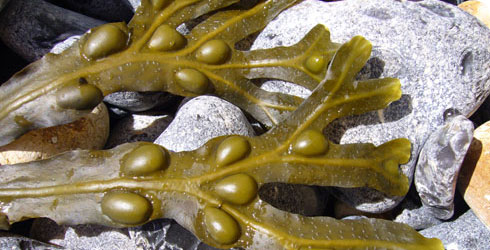Big Seaweed Search
Take a walk along the coast and help us monitor the effects of climate change and invasive species on the UK's seaweeds.
Seaweeds are easy to find and occur all around the UK coastline. There are a staggering 650 seaweed species in the UK, around 7% of the world’s species, and they play a vital role in the functioning of the marine environment.
Scientists think that the effects of climate change and the spread of invasive species are starting to have an effect on where they are found but they need more information to be sure.
This is where you can help. Identify the seaweeds you spot on the UK's coast and tell us what you find. This will help researchers from the British Phycological Society and Natural History Museum to find out what is happening to our seaweeds.
-

About the Big Seaweed Search
Seaweeds support a wealth of life, but they may be affected by invasive species or by climate change. Find out more about the aims of the Big Seaweed Search and what scientists hope to discover.
-

Why are seaweeds important?
What exactly are seaweeds and what are they used for in everyday life? Although you may not know it, you use them regularly. Find out more.
-

Types of British seaweed
Identify the different types of seaweed found on British beaches by looking through these images and using our identification tips.
-

Taking part in the survey
Anyone can take part in the Big Seaweed Search, whatever their experience. Find out how to record your seaweed observations and send them back to the scientists who will be studying them.
-

Record your results
Submit the results of your seaweed search online so that scientists can use them to study the distribution of British seaweeds.
-

Big Seaweed Search results
Follow the progress of the Big Seaweed Search by finding out the distribution of different British seaweeds recorded so far, on the interactive map.
Get involved
Help us find out more about these wonderful organisms by taking part in the Big Seaweed Search. You don't need to be an expert - just use our downloadable guides.
On the seashore forum

Discuss seashore life and ask the experts for help identifying your finds including seaweeds, crabs, shells and animal bones.



